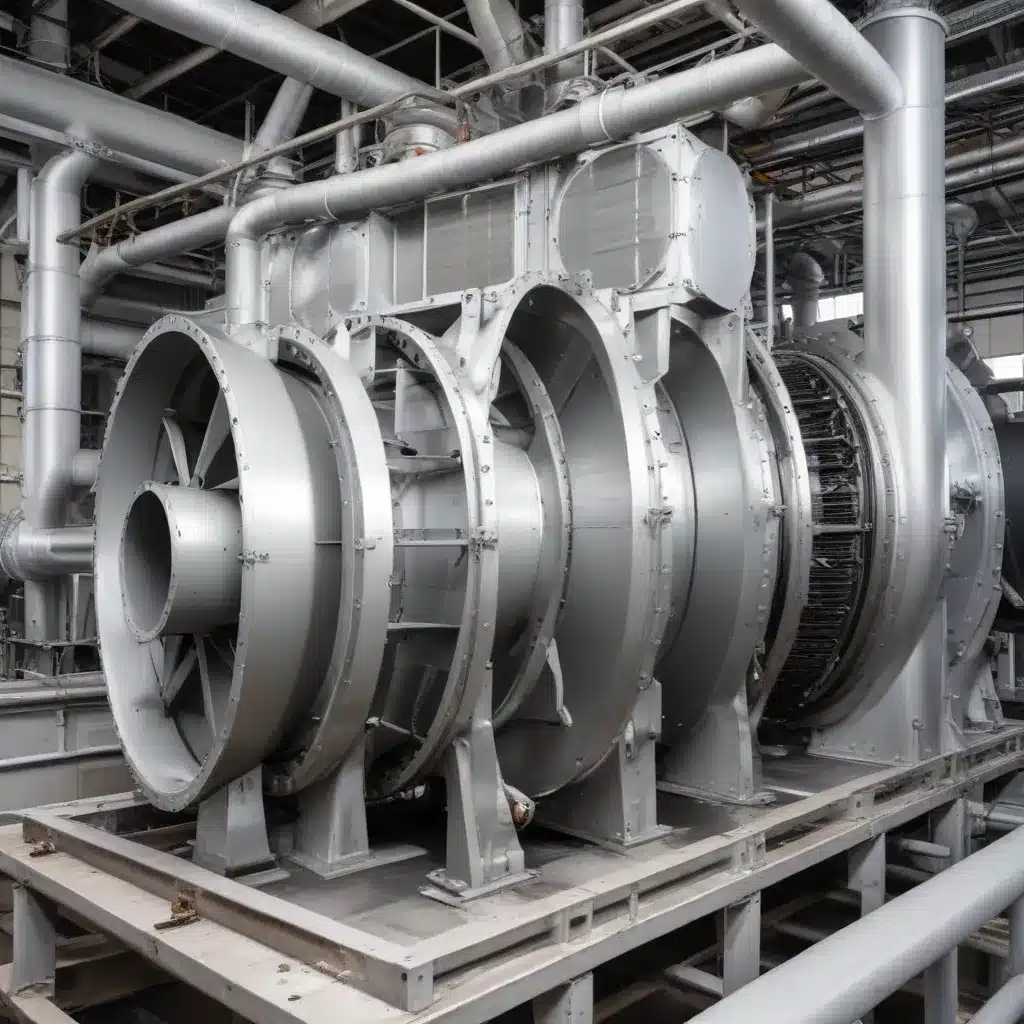
As a seasoned expert in the field of air-cooled heat exchangers, I understand the critical role these systems play in maintaining efficient and reliable operations across various industries. From power generation and oil refineries to chemical plants and data centers, air-cooled heat exchangers are essential for managing thermal loads and ensuring uninterrupted production. However, the reliability of these heat exchangers can be greatly improved through the implementation of predictive maintenance and condition monitoring strategies.
Embracing Digitalization for Proactive Maintenance
Traditionally, air-cooled heat exchanger maintenance has relied heavily on scheduled inspections and preventive maintenance routines, with maintenance personnel manually collecting data on vibration, temperature, and other key parameters. While this approach has its merits, it often falls short in detecting early signs of degradation, leading to unexpected failures and costly unscheduled downtime.
The rise of Industrial Internet of Things (IIoT) technologies has opened new opportunities for enhancing air-cooled heat exchanger reliability. By integrating wireless sensors and advanced analytics, plant operators can now transition from reactive to proactive maintenance strategies, enabling them to identify and address potential issues before they escalate into full-blown failures.
Automated Data Collection and Edge Analytics
One of the key advancements in air-cooled heat exchanger condition monitoring is the deployment of wireless vibration transmitters. These devices can be easily installed on essential equipment, such as fans, bearings, and gearboxes, without the need for extensive cabling or infrastructure modifications. By collecting vibration data automatically at regular intervals, these transmitters provide a continuous stream of information about the health of critical components.
Moreover, these wireless transmitters often incorporate on-board analytics capabilities, allowing them to process the data locally and generate early warning signals. This “edge computing” approach helps to avoid overwhelming maintenance teams with raw data, instead prioritizing the most critical equipment and alerting them to developing issues before they can lead to unplanned downtime.
Leveraging Multi-Parameter Condition Monitoring
While vibration monitoring is a crucial aspect of air-cooled heat exchanger condition assessment, it is not the only parameter that should be considered. To gain a comprehensive understanding of equipment health, plant operators should also incorporate other measurements, such as temperature, fluid levels, motor current, and pressure.
By integrating these additional data points, condition monitoring software can provide a more holistic view of the heat exchanger’s performance, enabling maintenance teams to detect and diagnose a wider range of potential failure modes. For instance, a sudden increase in bearing temperature combined with elevated vibration levels might indicate an impending bearing failure, prompting proactive maintenance actions.
Optimizing Heat Exchanger Efficiency and Throughput
Air-cooled heat exchangers are susceptible to various types of fouling, which can significantly impede their heat transfer capabilities and reduce overall process efficiency. Conventional methods of manually inspecting and cleaning heat exchanger bundles can be time-consuming and often fail to identify the root causes of degradation.
Through the deployment of wireless temperature and pressure sensors, plant operators can now monitor the condition of individual heat exchanger bundles, tracking the onset and progression of fouling. This information can be used to schedule targeted cleaning interventions, optimize the frequency of maintenance activities, and minimize production losses due to reduced heat transfer performance.
Integrating Condition Monitoring with Enterprise Asset Management
To fully harness the benefits of predictive maintenance and condition monitoring for air-cooled heat exchangers, it is essential to integrate these technologies with the plant’s enterprise asset management (EAM) systems. By seamlessly sharing data between condition monitoring software and EAM platforms, maintenance teams can streamline their workflows, improve decision-making, and ensure that corrective actions are executed in a timely and efficient manner.
This integration can also enable more effective root cause analysis, as maintenance personnel can access historical data and trends to better understand the underlying factors contributing to equipment failures. Armed with these insights, they can then develop and implement proactive strategies to prevent the recurrence of similar issues.
Remote Monitoring and Optimization Support
The proliferation of IIoT and cloud-based technologies has opened up new possibilities for remote monitoring and optimization of air-cooled heat exchangers. Plant operators can now grant secure access to original equipment manufacturers (OEMs) or specialized service providers, empowering them to assist in diagnostic and troubleshooting efforts from a centralized location.
This remote support can be particularly valuable for plants in remote or hard-to-access locations, where on-site maintenance resources may be scarce. By leveraging the expertise of remote specialists, plant personnel can more effectively address emerging issues, reduce downtime, and optimize the performance of their air-cooled heat exchangers.
Conclusion: Embracing a Proactive Maintenance Culture
As the industrial landscape continues to evolve, the need for reliable and efficient air-cooled heat exchanger performance has never been more critical. By embracing the power of predictive maintenance and condition monitoring technologies, plant operators can take a significant step towards improving the overall reliability and availability of their critical assets.
By implementing wireless sensor networks, advanced analytics, and seamless integration with enterprise asset management systems, plant operators can transition from a reactive maintenance culture to a proactive one, anticipating and addressing potential issues before they impact production. This not only reduces unplanned downtime but also drives down maintenance costs, optimizes energy efficiency, and enhances overall process throughput.
To learn more about the latest advancements in air-cooled heat exchanger reliability and maintenance, I encourage you to explore the resources available on https://www.aircooledheatexchangers.net/. This comprehensive platform offers a wealth of information, technical insights, and practical tips to help you maximize the performance and longevity of your air-cooled heat exchangers.

